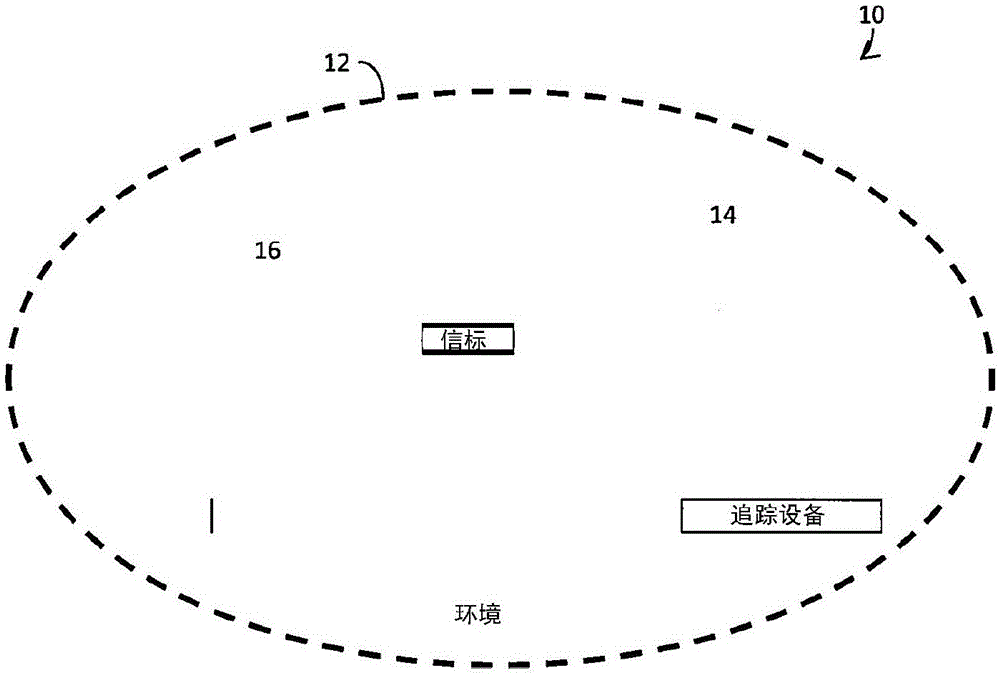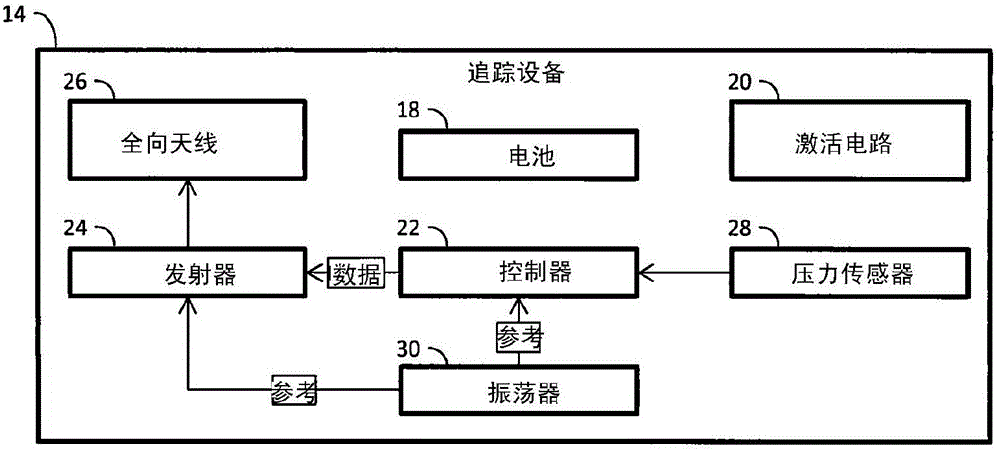Autonomous direction finding using differential angle of arrival
A directional antenna and beacon signal technology, applied in the field of tracking, can solve problems such as complex antennas, and achieve the effect of reducing current consumption and simple antenna design
- Summary
- Abstract
- Description
- Claims
- Application Information
AI Technical Summary
Problems solved by technology
Method used
Image
Examples
Embodiment Construction
[0030] To address direction and range in autonomous direction finding, this application describes a one-way tracking system that combines the use of radio frequency (RF) beacon transmitters on tracked objects with direction finding (DF) equipment combination. DF devices use differential time-of-flight (DToF), received signal strength indicator (RSSI), electronic compass, and directional antennas to provide bearing and range estimates to the object. The tracking system reduces tracking problems caused by multipath environments by determining a position from the signal with the shortest time-of-flight (ToF) and thus the fewest reflections. This enables the best estimation of the shortest path to the object and eliminates the need for two-way communication. This allows DF devices to achieve maximum link budget, and allows DF devices to operate in ranges where bi-directional communication is not possible.
[0031] In one embodiment, the tracking system is used to track Alzheimer...
PUM
 Login to View More
Login to View More Abstract
Description
Claims
Application Information
 Login to View More
Login to View More - R&D
- Intellectual Property
- Life Sciences
- Materials
- Tech Scout
- Unparalleled Data Quality
- Higher Quality Content
- 60% Fewer Hallucinations
Browse by: Latest US Patents, China's latest patents, Technical Efficacy Thesaurus, Application Domain, Technology Topic, Popular Technical Reports.
© 2025 PatSnap. All rights reserved.Legal|Privacy policy|Modern Slavery Act Transparency Statement|Sitemap|About US| Contact US: help@patsnap.com



